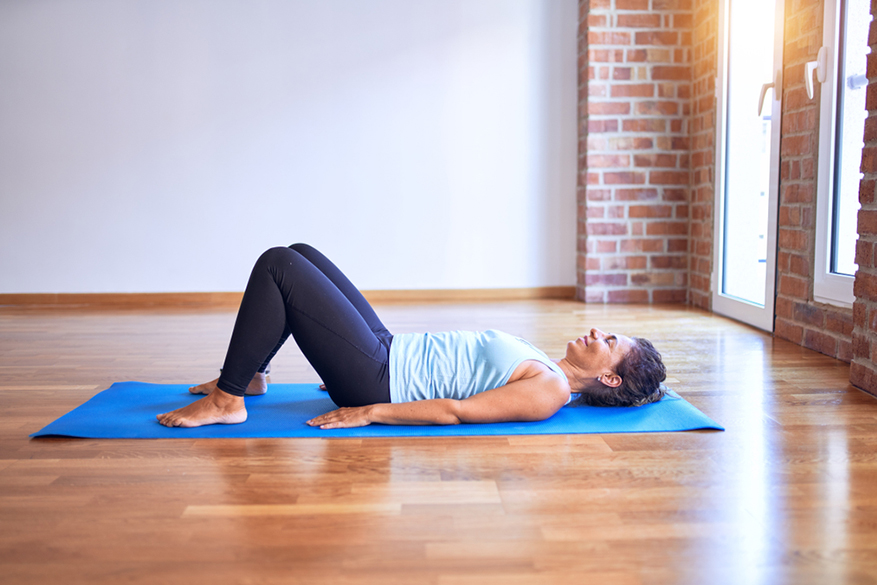
4 Best Post-Hysterectomy Exercises
A hysterectomy is a surgical procedure where the uterus is removed, ending menstruation and the ability to become pregnant. While the procedure is not uncommon, and some women undergo it as an elective procedure in order to eliminate their chances of becoming pregnant, a hysterectomy is still a significant surgical procedure that requires proper recovery and, later on, strength building. Below, we discuss four different post-hysterectomy exercises that you can do.

By Africa Studio / Shutterstock.com
However, we wanted to give a note of caution before we dive in: Always discuss everything with your doctor before beginning any type of exercise following a surgical procedure, including a hysterectomy. Exercising too soon or too much before your body has had time to recover may result in tearing, injury, and/or pain, as well as worse scarring. Depending on what type of hysterectomy you had, your abdominal and core muscles may be initially compromised, which can make almost any type of exercise difficult. Even light exercises, such as stretching, put tension on the stitches and scarring and can prolong the healing process. Instead, be gentle with yourself and with your body. It just went through a pretty major surgical process and deserves some R&R.
Let’s say that you’ve recovered well and your doctor has given you the green light to move forward with exercise. Here are four exercises that can specifically help you build your body after a hysterectomy:

By Krakenimages.com / Shutterstock.com
1. Kegels
A mainstay of pelvic floor exercises, Kegels work the inner muscles of the vagina and pelvis, building the exact same muscles that are compromised during a hysterectomy. To perform this pelvic floor exercise, lie down on the floor with your legs extended and your arms by your sides. Tighten your pelvic floor muscles by pretending that you are stopping urination mid-stream — but don’t tighten your abdominal muscles, a very common mistake. If it helps, pretend that you are holding a marble in your vagina and you have to squeeze those muscles to hold it tightly in place. (If you contract your ab muscles, that would push the imaginary marble out.)
Speaking of marbles, once your doctor has cleared you for it, using a Kegel ball can make it easier to identify the right muscles and enhance the intensity of the exercise. Kegel balls come in several different sizes, shapes, and weights for different intensities. While Kegel ball exercises might be appropriate right after your surgery, it’s good to keep them in mind for later on.
Learn More About Kegel Ball Exercises
2. Stretching
Stretching is a good way to get your blood flowing and ease your body back into movement. When you start, try to avoid stretching your surgery site specifically. Instead, focus on your neck, shoulders, chest, back, legs, and other areas that you can stretch without disturbing your scar too much. As you heal more, your doctor may instruct you to do stretches that specifically target the pelvis, including happy baby, the spinal twist, the butterfly stretch, and more.
Learn More About Yoga for Pelvic Floor Strengthening

By pixelheadphoto digitalskillet / Shutterstock.com
3. Walking
Your doctor will likely instruct you to stay away from serious exercise for a minimum of six to eight weeks after your surgery. However, after the first two weeks, they will probably recommend some light movement to help boost your circulation and prevent blood clots, which are more likely after surgery. Walking is an ideal form of low-impact exercise that will get you moving without stressing your body out. Start with a slow lap around the block and then you can eventually increase the distance as you heal up more. Make sure to wear breathable clothing that won’t trap sweat or chafe against the incision site.
4. Abdominal exercises
As you continue to recover, your doctor might advise that you begin rebuilding your abdominal muscles after your recovery period has passed and the incision site has completely healed. Start slow and give your body time to recover in between exercises. You don’t want to strain something. Exercises such as bridge lifts, scissor-switch, dead bug, leg lowers, crunches, and planks will all help build your core strength and help you regain mobility. As always, listen to your body and stop immediately if you feel any pain.
Recovering after any major surgery, including a hysterectomy, takes a while. Make sure to always follow your doctor’s instructions and not to push yourself too hard. It’s better to quit while you’re ahead for the day than to do something too intense and strain yourself. If you’re intrigued by the idea of Kegels and want to know more, start with our guide that explains “What is pelvic floor therapy?”
Understanding Pelvic Floor Therapy